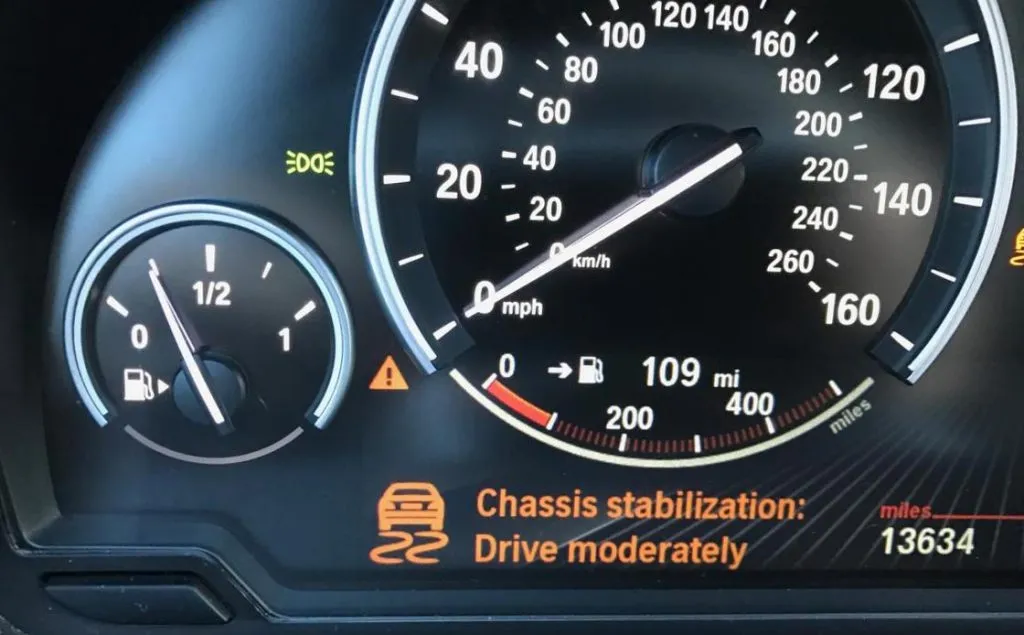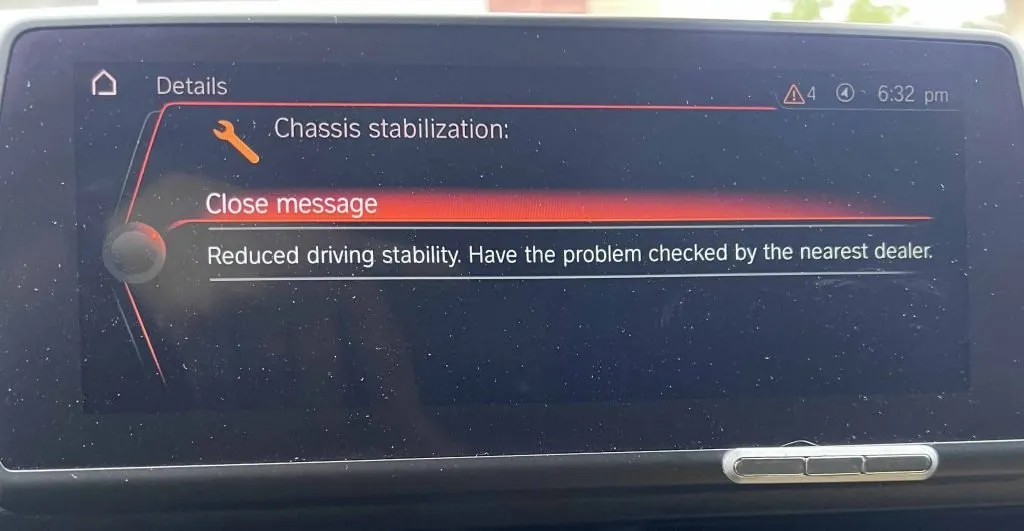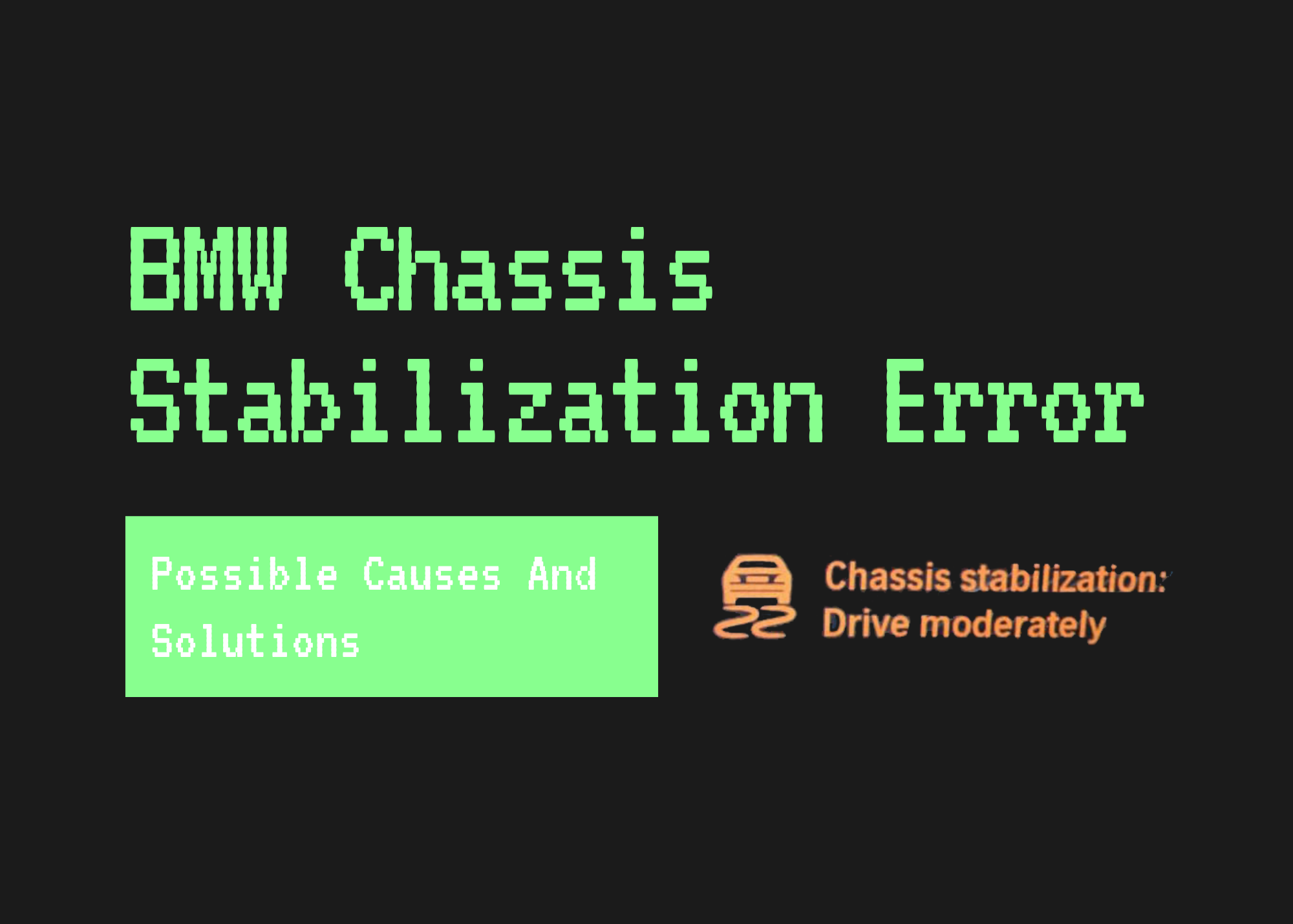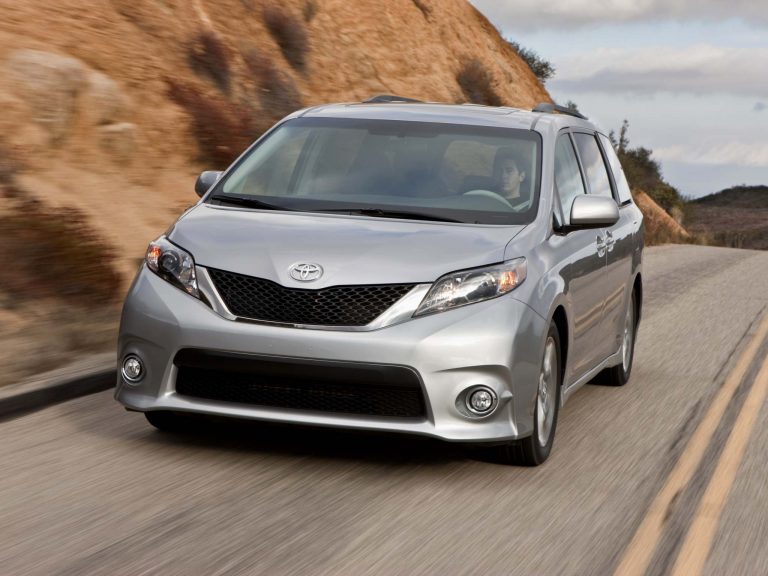The BMW Chassis Stabilization Error – Possible Causes And Solutions
Anytime an error pops up on your dashboard it can be a cause for concern even when the error is entirely unfounded. How can you know for certain whether an error is genuine or a mistake until you have checked it out? You can’t.
Unfortunately, that means we tend to find that certain uncommon error warnings can leave us confused and unsure of what steps to take. Can I still drive? Do I need to see a mechanic? How much is all this going to cost me? When it comes to the BMW chassis stabilization error it’s not one that you want to ignore.
What Is Chassis Stabilization?
Chassis stabilization is an important process that allows BMW to provide the smooth and enjoyable driving experience that we have all grown accustomed to associating with the brand. Chassis stabilization is an automatic process wherein your onboard computer attempts to detect and counteract instability issues in the chassis of your vehicle.

For example, if one of your wheels starts to skid due to road conditions the chassis stabilization system can counteract this wheel skid and redivert power where necessary.
Why Is Chassis Stabilization Important?
Chassis stabilization is an important feature for many reasons. Primarily, it is an excellent safety feature that can be the difference between a near-miss being a near-miss or being a full-on collision. Chassis stabilization is performed by a computer that is fed information by various onboard sensors.
If there is an issue with the chassis stabilization functions of the onboard computer it can leave you at risk of serious injury, or worse. While not every vehicle uses a chassis stabilization system as proficient as BMW many vehicles have some kind of system in place.

However, the problems that arise from a failing chassis stabilization system are arguably worse than having no system in place at all. BMW has very cleverly taught its state-of-the-art system to learn how you tend to drive and to adjust accordingly.
Great, right? Except when the chassis stabilization system fails the car is now not adjusting to your particular driving style and you will find it responds slightly differently to everything from throttle to gentle nudges on the steering wheel. That’s why the chassis stabilization error should reduce throttle sensitivity while encouraging you to perhaps pull over to the side of the road.
Possible Causes For Chassis Stabilization Error
There are a few causes for a chassis stabilization error that you should be aware of. Hopefully, before the error has occurred, but if not, this will have to do. Thankfully, it is almost always going to be a case that it’s a minor issue with the connection of one of the sensors to the motherboard somewhere around the car.
This can happen from small bumps or just general wear and tear. However, it is also possible that there is an issue with one of the many major functions of your vehicle that is vital to your safety. The 4 most common systems that cause the chassis stabilization error are the ABS system, the engine, the suspension, or the transmission. This doesn’t narrow things down for you, unfortunately.
Any, or all, of these systems, could be the cause of the error as they all contribute to the chassis stabilization process. If you have reason to believe that there is a genuine issue and it’s not just a faulty error, then you may need to pay a trip to your local dealership or a trusted mechanic who can give things a once-over.
Possible Solutions For Chassis Stabilization Error
Before you begin to run up a huge bill from your mechanic or dealership in your head, there are a few things you can try. The first is a test to see whether or not the error was even real in the first place.
False errors crop up all the time and while all errors should be treated as real until proven otherwise, there is no use getting frustrated over an error that wasn’t meant to pop up. First, while you are parked at the side of the road, in a parking lot, or on your driveway, turn off the ignition and leave your vehicle off for about 10 minutes. Some people say five to six minutes is fine but we are in no rush.
After you turn the ignition back on you will likely see that all warning lights briefly display and then disappear. If your chassis stabilization warning light has gone away, congrats! It was a faulty error and you can go about your business.
If it occurs again, and the process to check whether or not the error was real again disappears, you may want to speak to your mechanic. Just to be on the safe side. If the car feels and sounds fine and the errors keep disappearing there is a chance it is a nuisance rather than a cause for concern.
If you want to try and narrow down the possible causes yourself the best thing to do is check out what other warning lights may be on display. For example, if your ABS light comes on with the chassis stabilization error then you almost certainly know that the ABS is the root of your problems.
A check engine light could signal that the engine is the issue and it may be as simple as checking your oil levels. If in doubt, ask a professional. Because driving around on brakes that don’t work right and an engine that’s struggling is naturally, unadvisable.
Conclusion
As you can see the chassis stabilization error is not one to be ignored, even if it is usually a false alarm. As always, when it comes to cars you need to be cautious as you are putting your life, and the lives of others, at risk.
Even if you think it may be a false alarm it’s worth giving your dealership a quick call to see what they think, and in many cases, they may not even charge you to have a quick look if there is nothing going on. Plus, they can reset the warning light for you if it is starting to really grind your gears.






